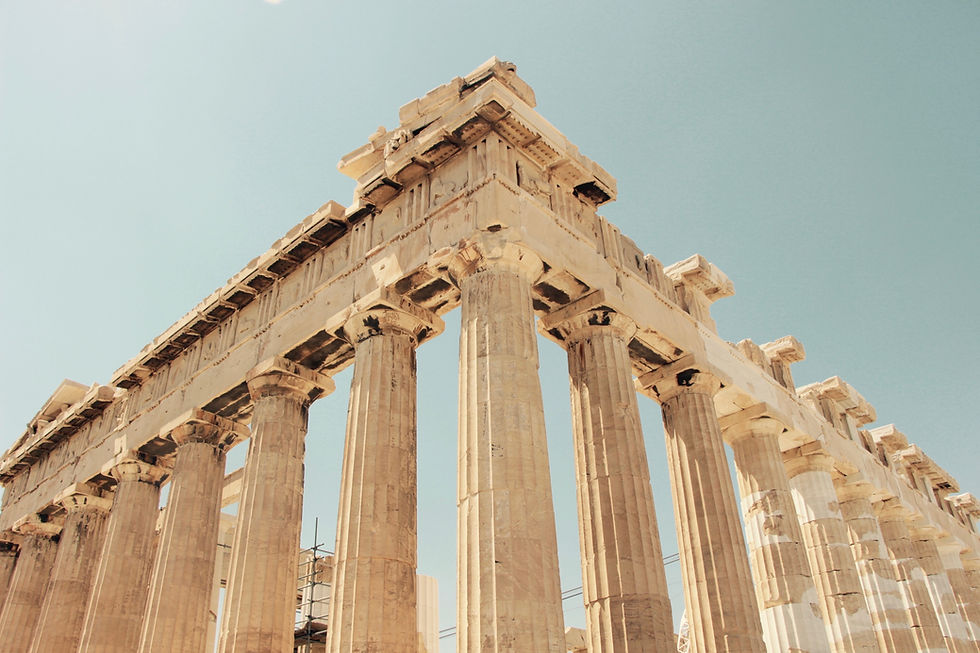The Ultimate Punishment Part 3: The High Cost Of The Death Penalty
- Courtney Heard

- Feb 17, 2015
- 5 min read
Updated: Aug 13, 2020

This is part 3 in a series that examines the death penalty in the United States of America. You can read the other posts here:
Part 1: Redemption
Part 2: Deterrence
Part 3: Cost
Part 4: Humane killing?
Part 5: Closure
Part 6: Conclusion
In 2014, Washington State saw an unprecedented 3 capital cases being tried at the same time. Christopher Monfort was being tried for the murder of a police officer. The state shelled out more than $4 million just to pay his lawyer. Joseph McEnroe and Michele Anderson were being tried at the same time, for multiple murders. Their defense costs had risen to near $4.9 million.
It’s important to note, these costs were for their defense alone. This does not take into account the courtroom costs, the court staff, the prosecution costs, or housing, feeding and meeting the basic needs of the defendants while in pretrial custody.
In February 2014, Governor Jay Inslee called a moratorium on executions in Washington State. He cited rising costs and illustrated an arbitrary system that cherry-picked those cases which capital cases based solely on county budget at the time.
In essence, the State of Washington was in the business of assessing how many people it could afford to kill. Not exactly something you would associate with a civilized and humane society, is it?
Death penalty supporters often claim that putting a man to death is far less expensive than it is to keep a man in prison for life. This seems reasonable enough. During a life sentence, the state puts up the dough to keep him alive: his food, his hygienic needs, his health care. Correctional officers need to be employed to uphold strict maximum security protocol. Doctors, lawyers, wardens, counselors and janitorial staff all have salaries to pay as well. There is no arguing that prison is expensive, but the idea that a life sentence is somehow more expensive than the death penalty is simply not based in fact. The death penalty is significantly more expensive than life without parole. There are several reasons for this.
The first reason is the trial and pretrial period of a capital case. Due to the irreversible nature of capital punishment, the system is set up to be thorough, so as to protect the innocent from being wrongfully executed. This means trial times are longer, with lengthier jury selection phases (sometimes months long), special motions and a more in-depth look at the evidence. The investigation into the evidence is more thorough and often more expert witnesses will be heard from. It means longer deliberation times for juries that often include a few people who don’t like the idea of putting a human being to death. Sentencing is completely separate from the conviction phase of the trial and incurs a comparable cost to a trial. If the defendant is sentenced to anything less than the death penalty, those costs are not recoverable. The state still pays for the capital trial and sentencing, even when a capital sentence is not reached.
Another costly part of a capital case is the appeals process. The death penalty is final. You cannot correct it if the punishment was doled out by mistake. Therefore, the defendant in capital cases has a right to an appeal, automatically. In some states, the appeal is mandatory and in others, the defendant has the right to choose whether they will go ahead with their appeal.
Most appellate court systems across the USA do not have public defenders on the payroll, mostly due to lack of funding. This leads to the state footing the bill for a private defense lawyer during the appeals process. This can cost upwards of half a million dollars, just for the defense lawyer during appeals alone.
The appeal process for a condemned offender is taken to the highest court and treated as thoroughly and carefully as the original trial. It can incur as many costs as the first trial.
Housing men and women who have been sentenced to die is also more costly than life without parole. First, there needs to be a death row that must be maintained, guarded and kept separate from the general population. The thinking here is that segregating death row inmates from the general prison population will protect both the condemned prisoners and those in gen-pop. It is thought that a man sentenced to death has little to live for, and nothing to lose, putting the general population in danger should he walk amongst them. On the flip side, some capital crimes are so heinous, the general population might turn on the condemned man putting his life in danger. That sounds strange, considering he’s more or less there to be killed anyway, but consider the possibility that the original verdict was wrong, and through his appeals process, a DNA test clears his name. If he’s been killed in prison by a bunch of gen-pop vigilantes, well, then an innocent man has died.
Segregation is considered necessary and requires a whole block to itself. Due to the isolating nature of the cells, more correctional officers are needed, an additional yard is needed and special arrangements for eating and showering are made.
The execution process itself is also expensive. The drugs alone cost little more than a hundred dollars, but safeguarding the correctional officers and medical staff has become costly. Special procedures are usually put in place so that several people initiate the injection process, in order that no single person is sure their action alone is what led to a death. It’s thought that this protects the prison staff from walking away with severe PTSD from having to kill a human being. It doesn’t work. They still do.
More and more medical staff are pulling out of the procedure as time goes on, though, as they feel it violates their Hippocratic oath. The task of finding a willing and qualified professional to take part in an execution is becoming more difficult and more costly.
Studies have found repeatedly that a capital case costs, on average, one million dollars more than that of non-capital cases. In Kansas, a death penalty case costs 70% more than a non-capital case. In Tennessee, it’s 48%. In Maryland, it’s 3 times the cost of a regular case. According to Amnesty,
In California the current system costs $137 million per year; it would cost $11.5 million for a system without the death penalty.
The sheer and crippling cost of the capital system cuts into funding for victim’s services. It takes cash away from education. It reduces the average American’s access to health care. It cuts into crime prevention spending… prevention, which would help stop people from becoming victims in the first place. It reduces the funding for law enforcement, which jeopardizes your safety and creates more victims of crime. Most importantly, it reduces the ability, through lack of funding, of investigators to solve abhorrent crimes and get dangerous people off the street.
Some have suggested that the costs of the capital system can be reduced. One option is to cut short the appeals process, but even without the automatic appeals process, capital cases cost several times what regular cases cost because of the lengthier trials. Plus, with some studies finding that 1 in every 25 death sentences handed out is given to an innocent man or woman, the appeals process is necessary and absolutely must be thorough.
A capital system, at it’s best, is either brutally and cripplingly expensive, or it’s going to victimize a lot of innocent men and women. You can’t have a capital system that is swift, inexpensive and fair. The idea of such a thing is as absurd as the resurrection.
Washington state recently realized this and did the right thing by ending the capital system in their state.
If you like what I do here and want to support my work, you can chip in here or become a member here.
This is part 3 in a series that examines the death penalty in the United States of America. You can read the other posts here:
Part 1: Redemption
Part 2: Deterrence
Part 3: Cost
Part 4: Humane killing?
Part 5: Closure
Part 6: Conclusion
Further Reading:









































Comments